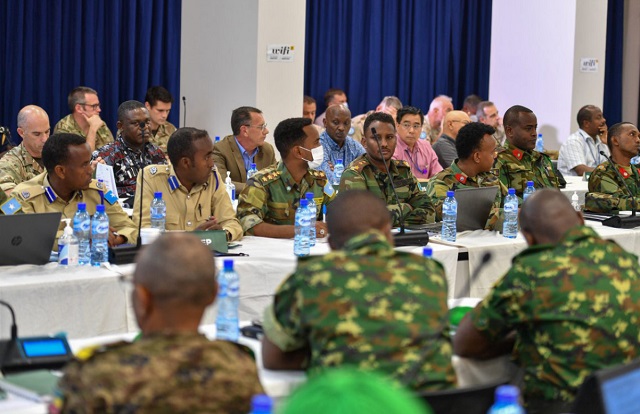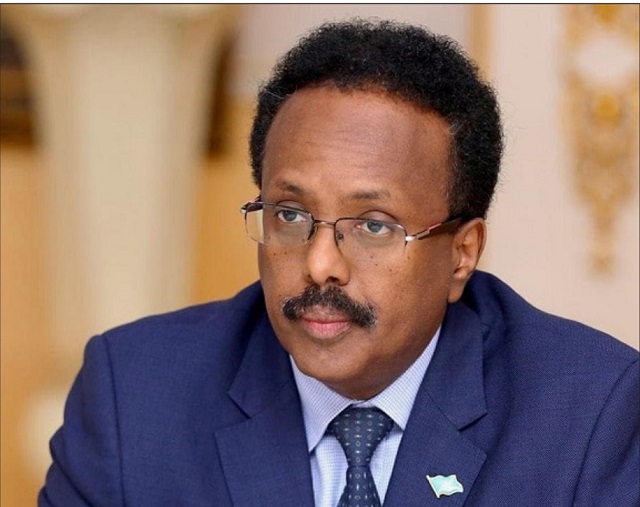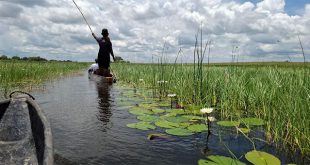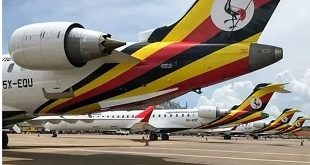
On April 1, the African Union Transition Mission in Somalia (ATMIS) became the official name of the 15-year peace keeping mission called AMISOM. However little has changed about its challenges
Kampala, Uganda | IAN KATUSIIME | ATMIS was authorised by the African Union Peace and Security Council Communique of the 1068th Meeting and mandated by UN Security Council Resolution 2628 (2022). The name change from AMISOM to ATMIS is the first visible sign of what looks like a reconfiguration of the peacekeeping mission after years of its rumoured end owing to financing reviews from its funders in the U.S. and Europe. The jury however is still out on whether any substantive changes are in the offing.
The transition process has been outlined to take place in four phases: Reconfiguration; Joint Shaping and clearing operations and the handing over of forward operating bases to Somali security forces; Decisive Operations and handing over of the remaining forward operating bases; and Withdrawal and liquidation of ATMIS.
A host of challenges surrounding the mission could render the name change even less meaningful since the transition phases are variants of what AMISOM was eventually meant to do. Somalia is yet to hold a presidential election after the mandate of President Mohamed Abdullahi Farmaajo expired three years ago leaving the political situation in the country fragile.
A rift between Farmaajo and Somali Prime Minister Mohamed Hussein Roble has created tensions in the country Uganda has been invested in since the peace keeping mission was created fifteen years ago. Roble was behind the recent expulsion of Ambassador Francisco Caetano Jose Madeira, Special Representative of the Chairperson of the African Union Commission. The Special Representative is the head of the peace keeping mission.
“The Somali government declares the special representative of the African Union …persona non grata for engaging in acts incompatible with his status,” the prime minister’s office said in a letter on April 06.
A source with knowledge of the mission operations who preferred anonymity told The Independent trouble for Madeira peaked when he allegedly engineered the expulsion of Simon Mulongo, a Ugandan diplomat who was serving as his deputy. Mulongo was declared persona non grata in November 2021. Mulongo was not available for comment by press time.
As it stands, the mission is now in an apparent leadership vacuum since Madeira and Mulongo, the titular heads, are no longer in Mogadishu. Madeira was said to be an ally of President Farmaajo putting him at odds with Prime Minister Roble who has been butting heads with the Somali President.
The AMISOM force commander and the continent commanders from the various troops contributing countries in Somalia’s peace keeping mission have been known to do the actual work of rebuilding the country as it deals with threat of terror.
Previously known as African Union Mission in Somalia (AMISOM), the mission was created in January 2007 with approval from the UN with an initial six month mandate. In March 2007, Uganda and Burundi became the first African countries to contribute troops to the mission and since then the mission has grown to include other regional players like Ethiopia, Djibouti, and Kenya. President Yoweri Museveni said the decision to deploy troops to Somalia was borne out of Pan- Africanism.
After the deadly Al Shabaab claimed responsibility for a terrorist attack in Kampala that killed 76 Ugandans in 2010, Museveni was defiant and vowed to deploy an additional 2000 troops to the country.
Since then, Uganda has been sending different battle groups and a contingent commander every year to the mission in Somalia.
The intensity of the battles between AMISOM forces and Islamic Courts Union- from which the Al Shabaab militant group sprung- compelled the AU to extend the mandate of the mission annually resulting into AMISOM becoming one of the most renowned peace keeping operations worldwide.
“It is really still the same thing (mission),” the source said. With a new name of the mission, analysts and watchers of the mission are wondering whether the change is only in name given the enormity of the challenges still at a hand.
“Of course there are changes. The mandate changes and the troop levels change,” Brig. Felix Kulayigye, the spokesperson of the Uganda Peoples Defence Forces (UPDF) told The Independent.
He added; “The mandate is going to be tailored to transitional federal institutions.”
Uganda is next in turn to provide the force commander of the 22,000 strong force. The previous force commander was from Burundi and his term expired recently according to those informed on the matter.
A statement by the mission appears to give the Special Representative of the AU Commission more authority. “ATMIS will be led by a Special Representative of the Chairperson of the African Union Commission, to whom each component – military, police and civilian shall report separately.”
The new changes suggest that the three components of the mission shall report to the Special Representative, a diplomatic figure who is ordinarily a civilian. However given that the current Special Representative Madeira was given matching orders, there is likely to be friction between the new one appointed and the powers that be in Somalia if the head of the mission does not toe the line.
The statement says the Force Commander will come from the largest Troop Contributing Country (TCC) and he/she will have a clear command and control over all the forces of the mission. Uganda has traditionally largest had the largest number of troops averaging about 6,000.
Previously, the AMISOM Force Commander would be appointed on a rotational basis and not necessarily on which country provides the bulk of peacekeeping troops. In addition, the force commander was the de facto head of the mission.
The AMISOM force provides security to the Somalia’s federal institutions as they carry out their functions and helps secure Somalia’s key infrastructure including its airports and seaports. UPDF has been at the heart of this. It occupies Sector 1 which includes Benadir region that covers parts of the capital city, Mogadishu and Lower Shabelle region- some of the most critical areas. Troops from other countries are spread out in the other five sectors across Somalia’s regions.
The military component of the mission stands at an estimated 18, 000 troops and after December 31, 2022 will undergo a phased drawdown of 2000 troops for the next few years until a final exit.
“The drawdowns will take into account the prevailing security situation in Somalia and will be guided by regular joint technical assessments,” ATMIS states on its site.

Other challenges
Much as there have been numerous assessments saying Somali security forces are not ready to hold fort, other countries have been signaling it is time Somalis took up the challenge. In one of the last actions of the Donald Trump presidency, all U.S. forces were pulled out of Somalia by January 2021. Some of the estimated 700 military personnel were relocated to Kenya and others to the nearby U.S. military base in Djibouti.
American forces were involved in the training of Somalia National Army (SNA) just like troops from European Union, Turkey and Uganda. The impact of some of the trainings has been hard to measure complicating the mission.
Paul Williams, a professor of international affairs at George Washington University, U.S., who has studied peace keeping operations in Africa wrote an assessment of the European Union Training Mission (EUTM) Somalia in 2020 documenting key challenges. The EUTM Somalia was created in 2010 to train Somali forces and for the first four years it was conducted at Bihanga, Ibanda in western Uganda before it moved to Somalia.
“The tangible operational impacts of EUTM Somalia activities were minimal for its first seven years because there was no clear connection between its training activities and SNA operations in the field,” Williams wrote in his assessment published by the Stockholm International Peace Research Institute (SIPRI) a think tank that provides data, analysis and recommendations for armed conflict, military expenditure and arms trade.
Williams said the training mission caused some reputational damage to the EU because of the failure to establish a direct link to effective operational units in the field compared to similar programs run by the U.S. and Turkey.
“EUTM Somalia was unable to provide lethal equipment to its trainees, despite the dire state of SNA equipment stocks. Again, this was in contrast to the training programmes provided to the SNA by Turkey and the USA,” he added.
Williams pointed out other problems that plagued the training mission such as inability to pay stipends to trainees, and the lack of field mentoring and a failure to monitor and assess Somali trainees after SNA had deployed them.
EUTM Somalia had trained 7000 personnel by August 2020 according to the SIPRI assessment. Roughly half of these from infantry units, with the rest being a mix of specialist units, non-commissioned officers (NCOs), officers and trainers. Williams noted that there was reprieve for the provision of military equipment by EUTM for SNA with the European Peace Facility that was set to take effect in 2021.
The European Peace Facility is an off-budget funding mechanism for EU actions with military and defence implications under the Common Foreign and Security Policy (CFSP) framework. With the Americans out of Somalia and with a not so guaranteed funding mechanism from the EU could perhaps send a signal that it is time for Somalis to take full charge of their affairs.
****
 The Independent Uganda: You get the Truth we Pay the Price
The Independent Uganda: You get the Truth we Pay the Price





